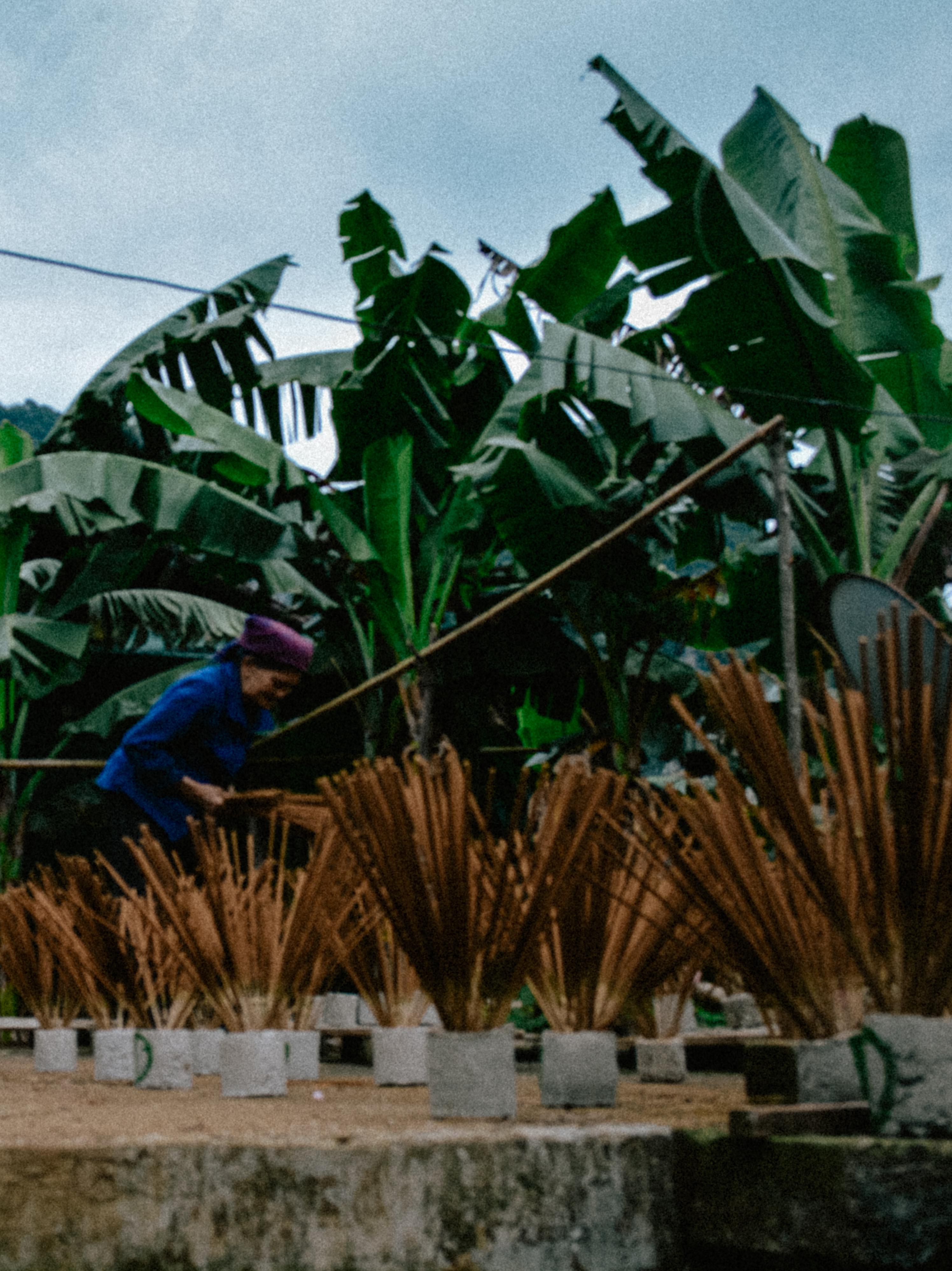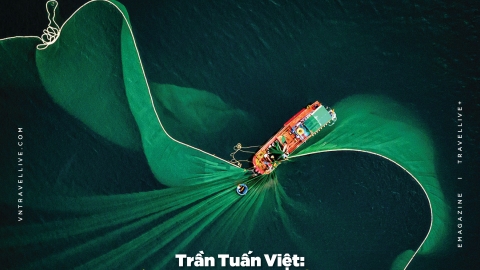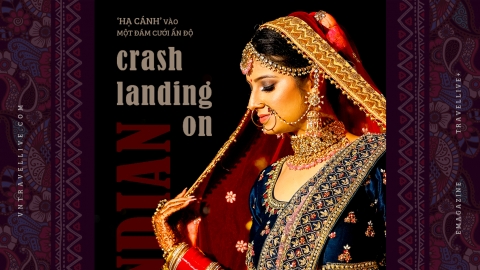In Cao Bang, craft villages have existed for a long time; people still preserve and are passionate about their craft despite the development of mass production technology, and many products can replace products from craft villages. Although there have been times when they were at risk of fading and being lost, the handicraft products from craft villages, thanks to their own characteristics, still have a special position in the market, are maintained and loved.
Dao Tien brocade embroidery workshop
No one knows when the brocade weaving profession began, but the brocade fabrics they weave have long been famous for their beautiful patterns, imbued with the Dao ethnic identity. According to ancient customs, Dao girls must know how to embroider and sew before getting married to weave their own wedding dresses.
The art of beeswax embroidery on brocade is a feat. The main materials for weaving brocade are jute, flax, and indigo fibers grown, spun, woven, and dyed by the people themselves. The process of printing beeswax on fabric is also very strict. The women will place the white fabric that needs to be printed with patterns on a flat surface and then use a stone to grind the fabric until it is smooth, then use a bamboo stick dipped in heated beeswax to draw the pattern on the fabric. Therefore, although it is all beeswax printed fabric, because it is completely handmade, no two pieces are the same. Brocade embroidery and beeswax printed products are mainly used to sew clothes, towels, and household items such as blankets, pillows, slings, etc.
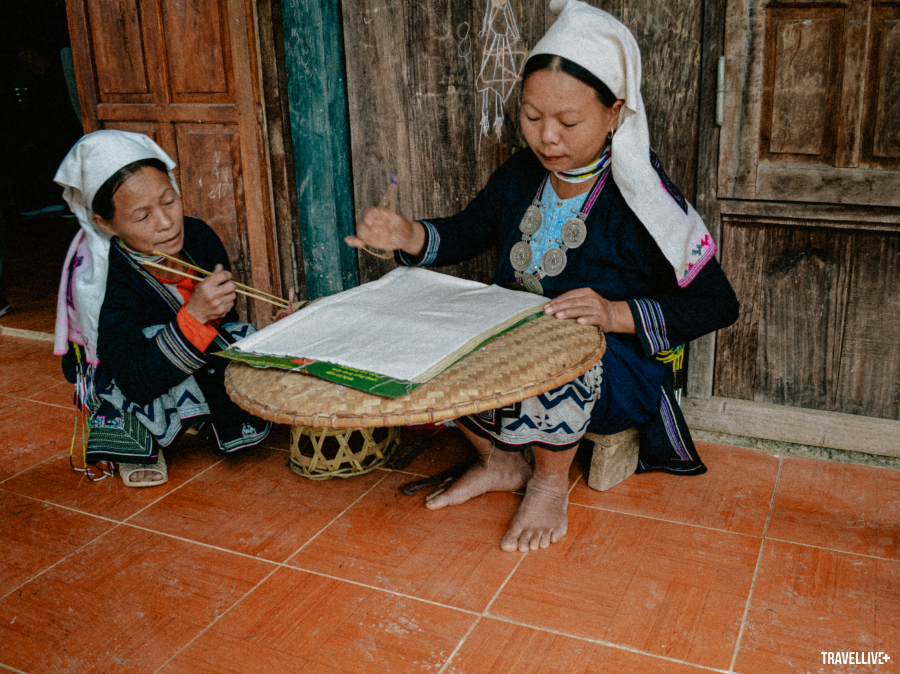
However, with the development of the times, ready-made clothes are everywhere, wanting a new outfit just need to go to the store to buy, both cheap and fast, spending too much time and effort to tailor a traditional costume is gradually becoming rarer in the Dao Tien community.Faced with the risk of the brocade weaving profession being lost, the government and people here have made many efforts to restore this traditional beauty. A Dao Tien woman told me that in the past, every family in the village dyed their own fabric and painted with beeswax, but now most of them only work in the embroidery workshop, which is not only a cooperative, but also a tourist attraction for many domestic and international tourists. The brocade fabrics are no longer the exclusive clothing of Dao women, but have become valuable souvenirs for many tourists. They buy brocade shirts, bags, and some even buy back the designs to contribute to creating international fashion products.
- Address: Hoa Tham commune, Nguyen Binh district
Phia Thap incense village
Phia Thap village has a traditional incense making profession. This is also the main place where the Nung ethnic people live. Phia Thap incense is made entirely from natural materials in the limestone mountainous region, which are mai tree (in Tay language, "may muoi") to make sticks, kapok bark, sawdust and especially Bau Hat leaves - a type of forest leaf used to make glue to bind materials together. The incense legs are made from May Muoi bamboo with long segments or mai tree. Mai sticks are split and shaved into pieces about 40 cm long, then dipped in water mixed with Bau Hat leaf powder to create an adhesive, then soaked 4 times with a mixture of Bau Hat leaf powder, chopped kapok bark, sawdust to get the incense sticks, and must be shaken quickly so that the powder sticks together and ensures even roundness.

The splitting of the incense sticks is done by hand, so that the incense sticks are shaved small and round.
The incense of the Nung An people is not dried in a kiln, but is naturally dried. Yard corners, walls, and fields are all used to dry incense. When the sun rises, Phia Thap incense village has round bundles of incense drying all over the yard... After drying, the finished incense sticks are dyed red and tied into bundles of 20 sticks. Everyone can participate in production and bring incense to sell on market days or serve tourists at spiritual destinations.
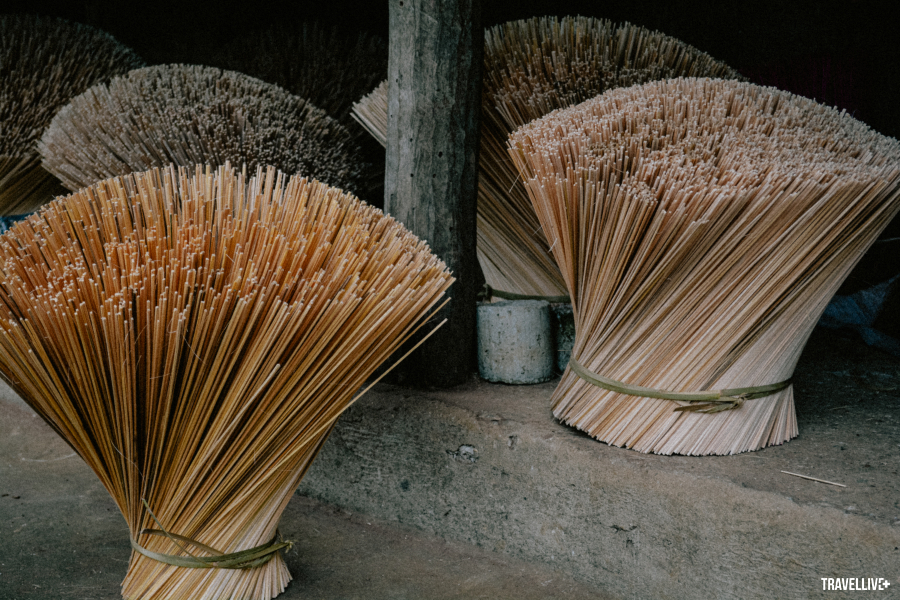
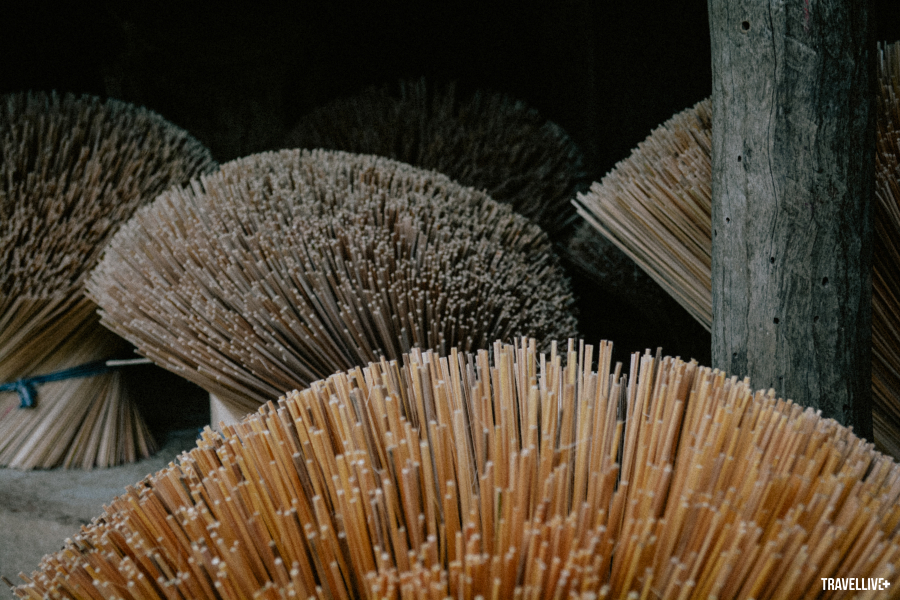
Phia Thap village's incense products are not only served by the Nung An people but are also favored by many other ethnic groups and have become a commodity present in all markets in the province because of their characteristic, pleasant aroma and guaranteed safety because they are made from natural ingredients.
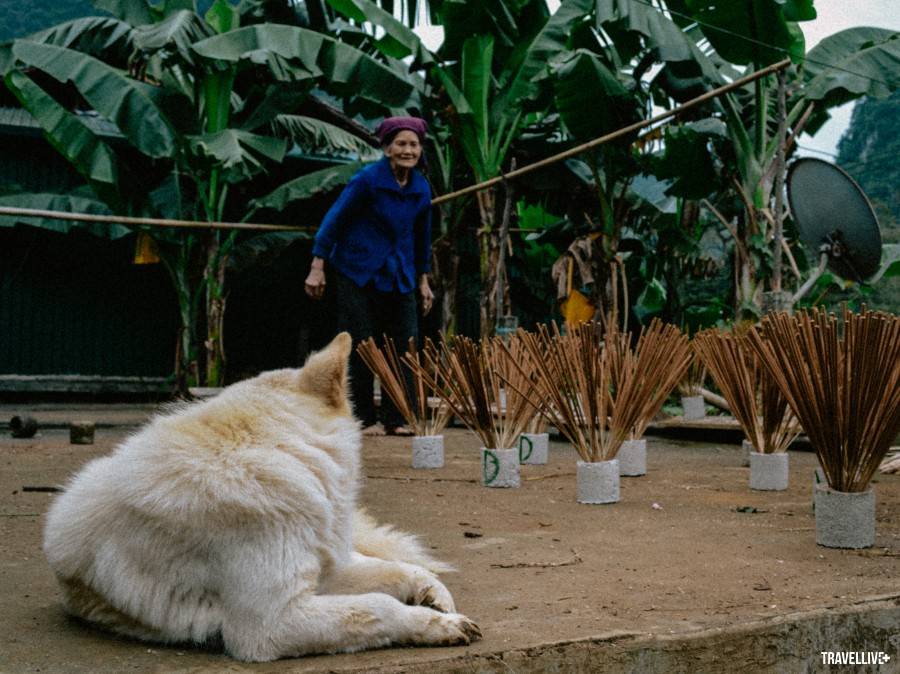
Yard corners, walls, and fields are all used to dry incense.
Making incense not only brings income to the people of Phia Thap village, it also contributes to preserving a traditional profession that is deeply imbued with the national identity of the Nung An people. Because there has never been a time when Vietnamese people did not need to burn incense, the profession of making incense will never disappear. Especially in recent years, Phia Thap has started doing community tourism, welcoming visitors from all over to rest, learn about the lives of the people, and at the same time experience making incense in the middle of a small, green village halfway up the mountain.
- Address: Located at the foot of Pha Hung mountain, Quoc Dan commune, Quang Uyen district
Pac Rang blacksmith village
The blacksmith village in Pac Rang has existed for about 500 years. The people living here are mainly Nung An ethnic people, most of whom are blacksmiths. Pac Rang's forged products are mainly for production and partly for exchanging other essential goods, but because of the good quality of the products, the reputation of the craft village has gradually spread far and wide, and people from many neighboring areas have come to place orders.Although the products here are not eye-catching and have prices 3 times higher than similar products from China, they are sold out as soon as they are produced.
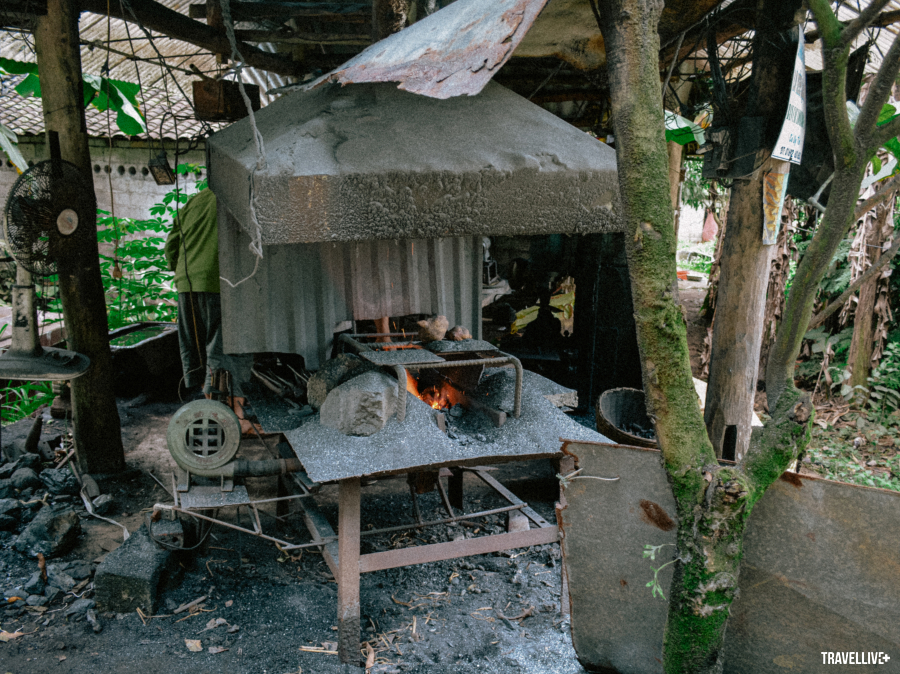
Most households in Pac Rang are blacksmiths.
To get a complete knife involves many steps, but there are four main steps: Cutting steel and hammering it into a predetermined shape, tempering steel, tempering steel and grinding the finished product. In which, the two processes of tempering steel and tempering steel are the two main steps that create the famous Pac Rang knife brand. Tempering steel is the process of heating, maintaining heat and rapidly cooling steel to increase the hardness and abrasion of the knife, increasing the durability of the knife. Tempering steel is the method of heating tempered steel below a certain temperature, only skilled and experienced craftsmen can recognize the certain temperature by looking at the red color of the steel in the furnace, then maintaining the temperature for a while and then cooling it.


Coming here, in addition to visiting blacksmith households, visitors also have the opportunity to experience community tourism in Pac Rang village, where there is a never-ending water source and a primeval forest creating a peaceful ecological landscape...
- Address: Phuc Sen commune, Quang Uyen district, located on National Highway 3 to Ta Lung international border gate, about 30 km northeast of Cao Bang city
Conclusion
To get to these traditional craft villages, visitors can take a taxi, bus or motorbike. The communes with traditional craft villages are mostly located on the route to visit the Ban Gioc Waterfall eco-tourism area, Ta Lung border gate economic zone and near Thang Hen Lake eco-tourism area. Beautiful natural landscapes, friendly people and typical traditional cultural features that are still preserved quite a lot will certainly bring visitors new feelings, suitable for picnics and explorations on weekends.
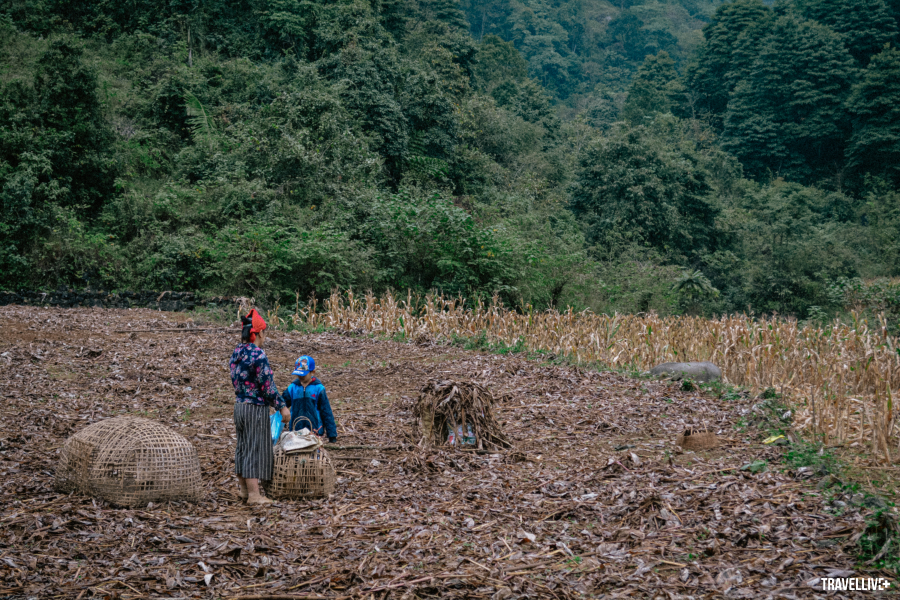
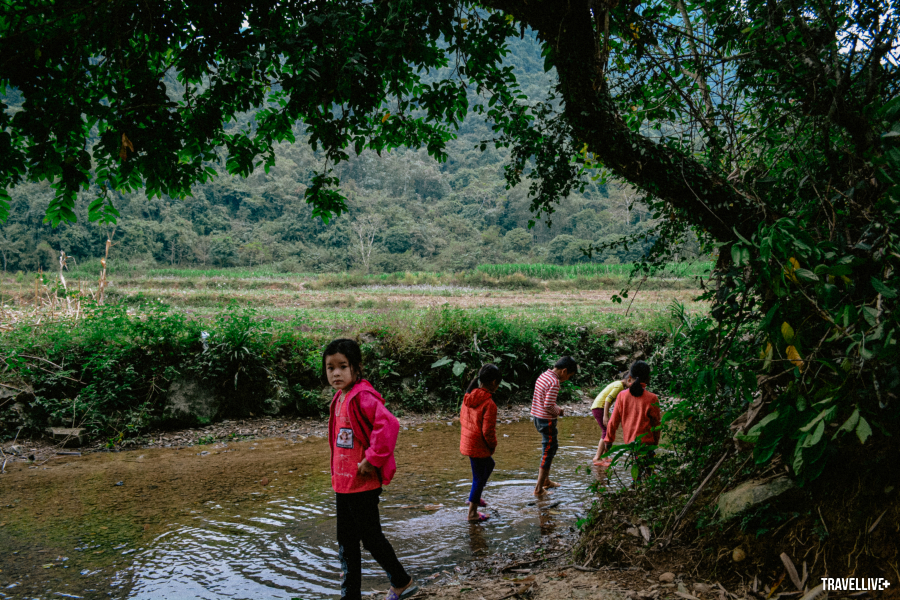
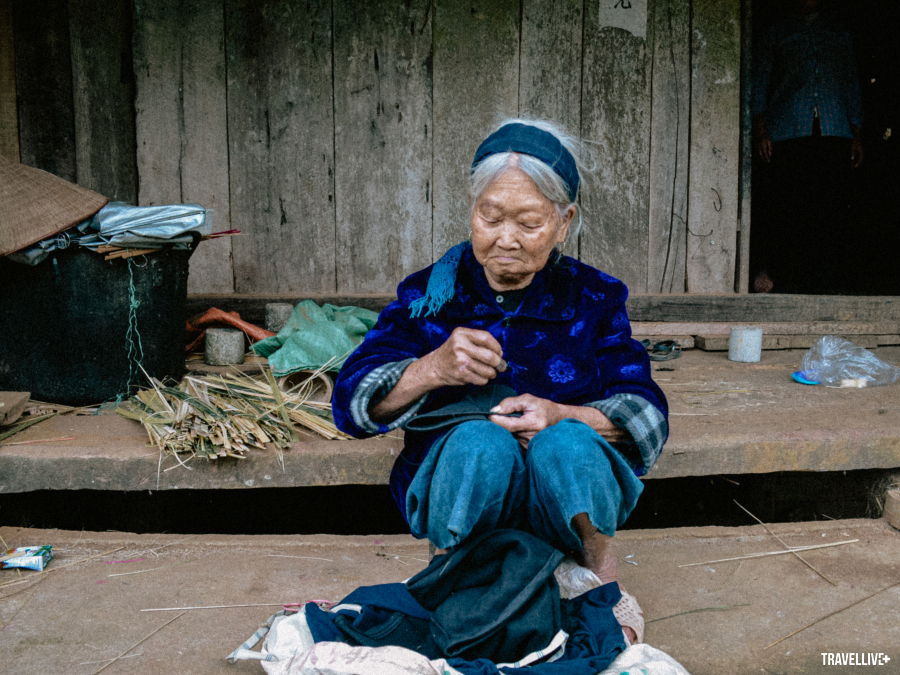
Cao Bang people are very friendly and many typical traditional cultural features are still preserved.
Nowadays, most of the traditional craft villages in Cao Bang welcome tourists to visit, take photos and experience the simple, rustic life at homestays. Although not yet fully equipped with modern facilities, this is truly a great opportunity for tourists to experience the life of the local people.
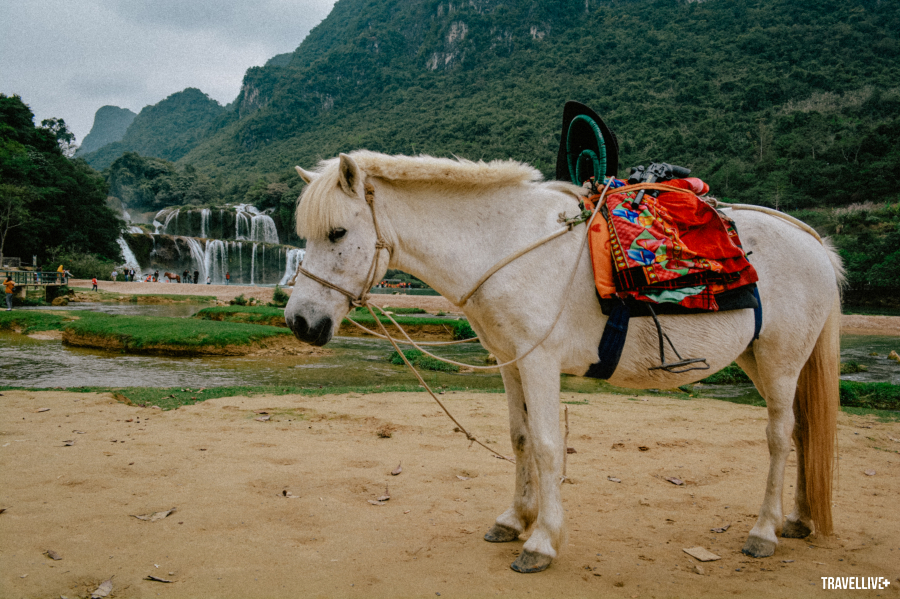
White horse serving tourists at Ban Gioc waterfall
MORE INFORMATION
- Itinerary: Cao Bang is about 280 km from Hanoi. From Hanoi, you can follow National Highway 3, through Thai Nguyen, Bac Kan to Cao Bang or follow the route QL1 - Lang Son - QL4 - That Khe, Dong Khe - Cao Bang. You can also buy bus tickets to Cao Bang at bus stations in the above provinces. If traveling by personal vehicle (motorbike, car), you need to pay attention to safety: brakes, tires, chains... and bring all necessary documents. You should bring some common vehicle repair tools because the road from Cao Bang city to Ban Gioc is quite difficult to travel.
- Time: In each season, Cao Bang has its own beauty. However, the best time to visit Cao Bang is August and September when Ban Gioc waterfall flows with clear blue water, also the time when the rice is ripe and golden, and in November and December - when buckwheat flowers and wild sunflowers bloom all over the mountains and forests.
- Accommodation: The system of motels, hotels and resorts in Cao Bang is quite diverse. You can choose to book a room at a homestay, motel or budget hotel with prices from 200,000 - 600,000 VND/night or Ban Gioc Riverside Resort with prices from 1,000,000 VND/night.
- Cuisine: Roasted duck, roasted pork with honey leaves, smoked sausage, dried beef, Gam River fried fish, Ban Gioc agarwood fish, fern, bamboo shoots, canarium sticky rice, sour pho, Trung Khanh chestnuts, ant egg cake, rice rolls, rice cakes... are dishes not to be missed.





